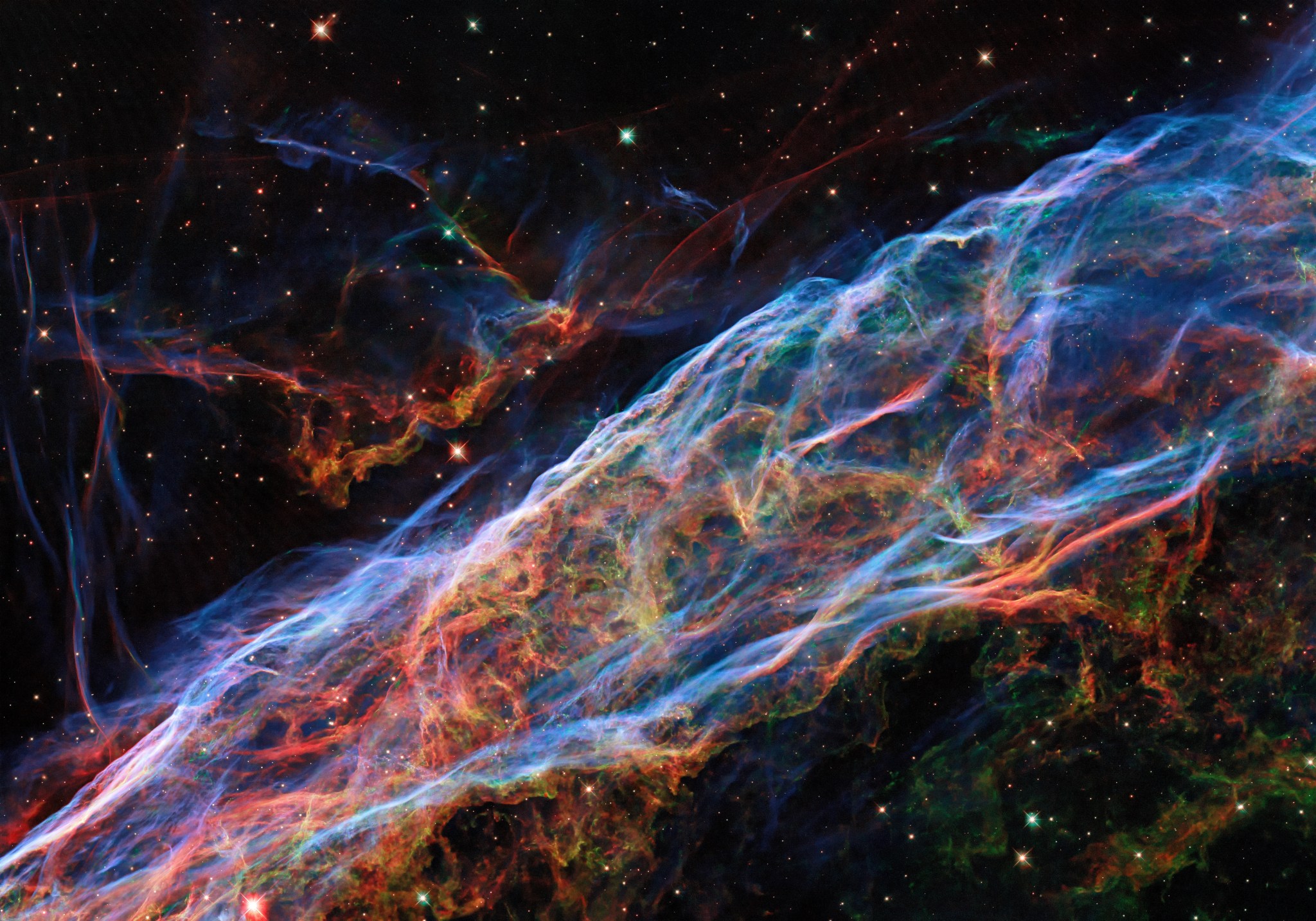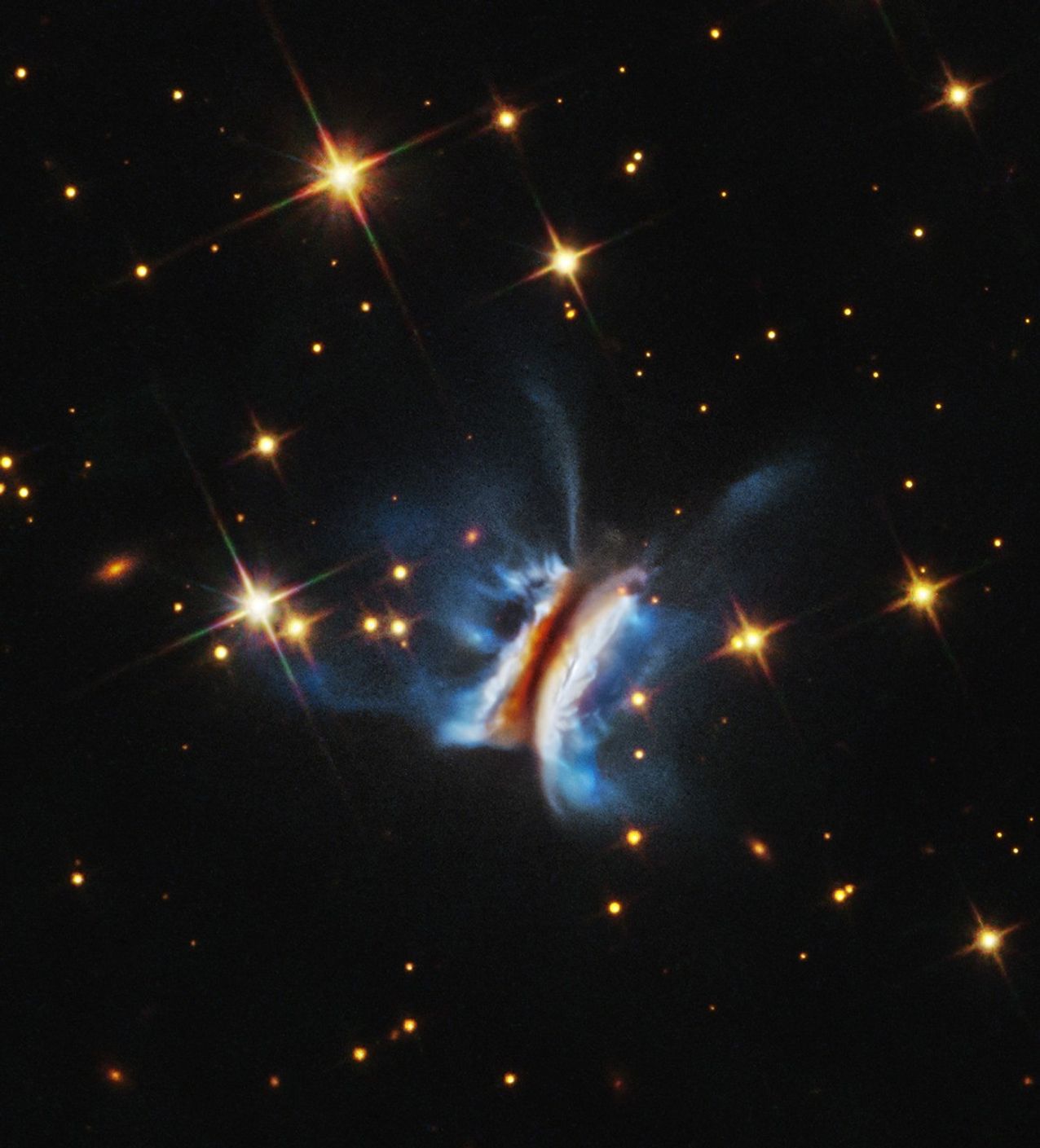This image taken by the NASA/ESA Hubble Space Telescope revisits the Veil Nebula, which was featured in a previous Hubble image release. In this image, new processing techniques have been applied, bringing out fine details of the nebula’s delicate threads and filaments of ionized gas.
To create this colorful image, observations were taken by Hubble's Wide Field Camera 3 instrument using five different filters. The new post-processing methods have further enhanced details of emissions from doubly ionized oxygen (seen here in blues), ionized hydrogen, and ionized nitrogen (seen here in reds).
The Veil Nebula lies around 2,100 light-years from Earth in the constellation of Cygnus (the Swan), making it a relatively close neighbor in astronomical terms. Only a small portion of the nebula was captured in this image.
The Veil Nebula is the visible portion of the nearby Cygnus Loop, a supernova remnant formed roughly 10,000 years ago by the death of a massive star. That star – which was 20 times the mass of the Sun – lived fast and died young, ending its life in a cataclysmic release of energy. Despite this stellar violence, the shockwaves and debris from the supernova sculpted the Veil Nebula’s delicate tracery of ionized gas – creating a scene of surprising astronomical beauty.
The Veil Nebula is also featured in Hubble’s Caldwell Catalog, a collection of astronomical objects that have been imaged by Hubble and are visible to amateur astronomers in the night sky.
Text credit: European Space Agency (ESA)
Media contact:
Claire Andreoli
NASA's Goddard Space Flight Center, Greenbelt, Md.
301-286-1940
claire.andreoli@nasa.gov


































